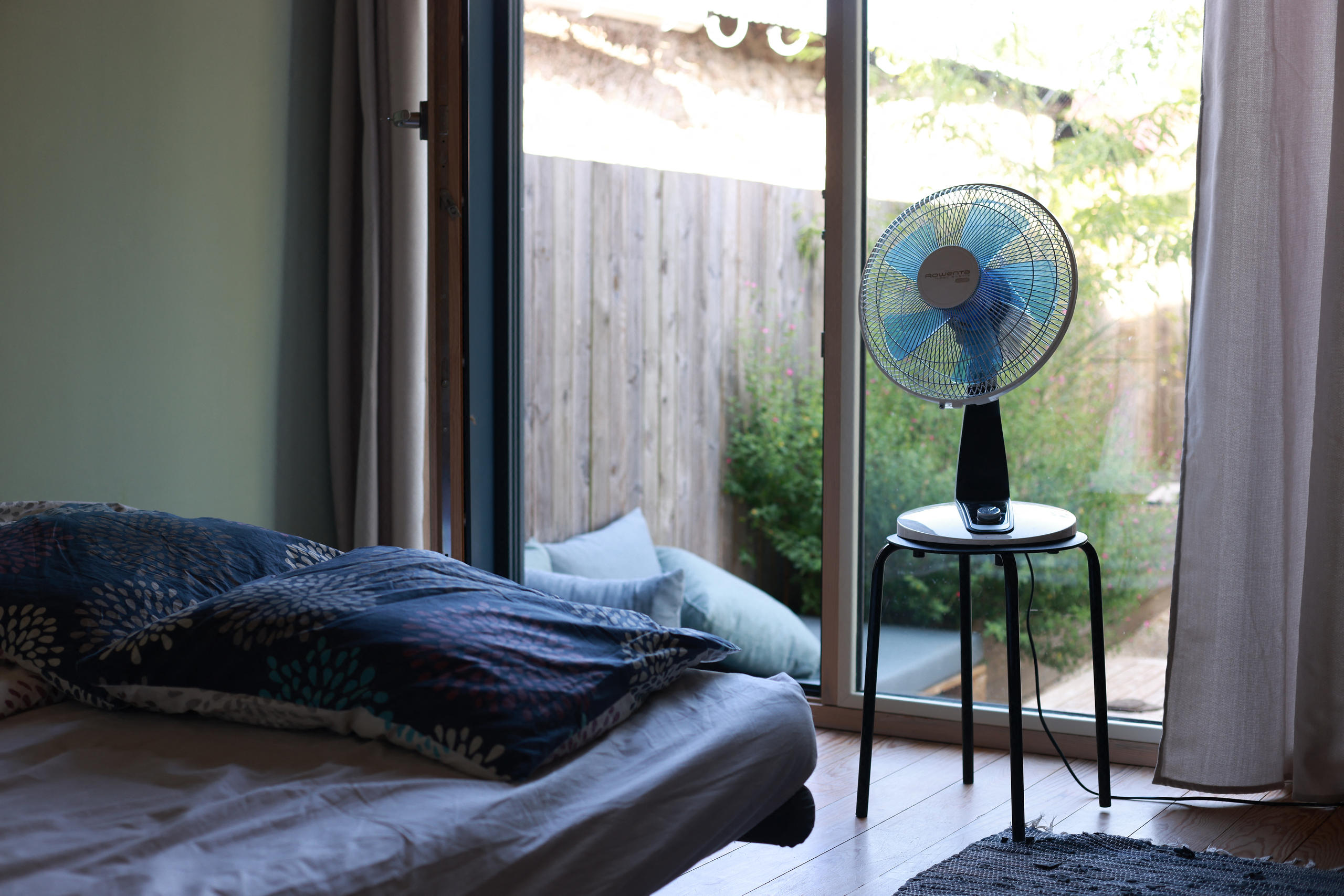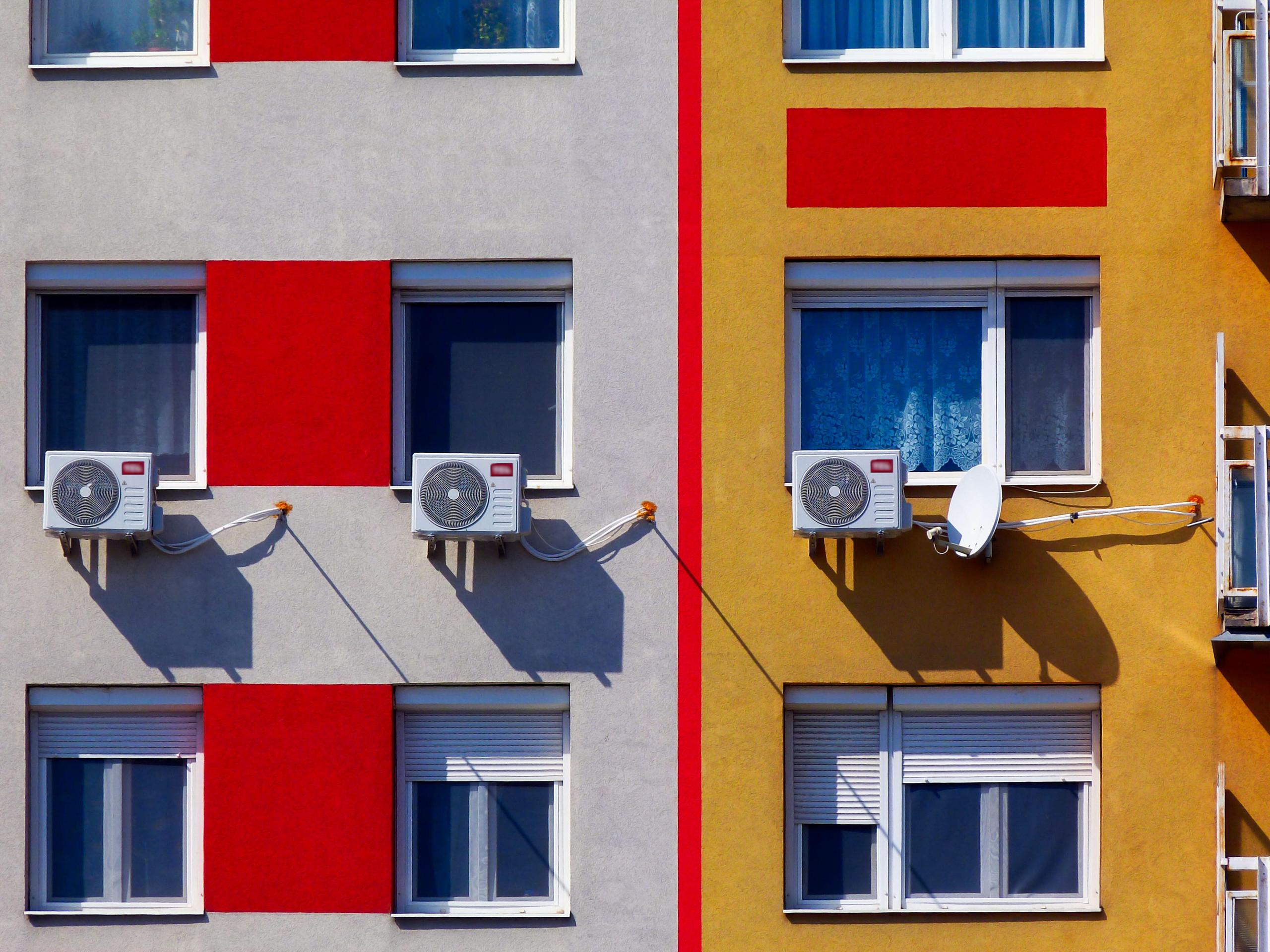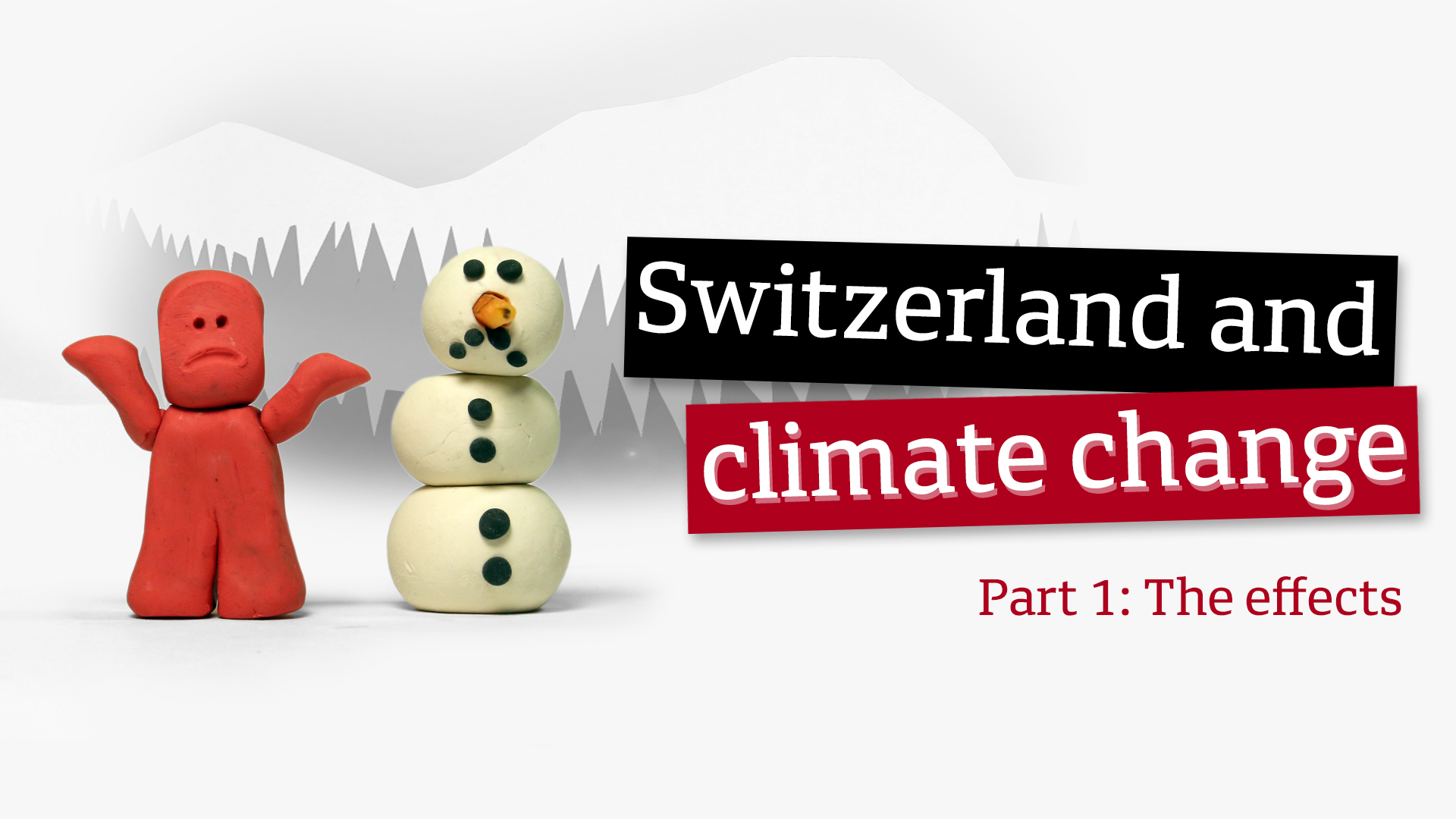
How to cool homes sustainably in sweltering weather

Switzerland is among the countries that will see the greatest relative increase in the need to cool buildings, according to an international study. To beat the heat, more and more people are turning to air conditioning, but there are more sustainable solutions, according an expert.
Switzerland has so far been spared the wave of extreme heat that has struck southern Europe, the United States and northwest China, with temperatures soaring above 50°C in some places. But hot weather could also become very hard to bear in Switzerland, especially inside houses and apartments.
Switzerland and the United Kingdom are the countries that will experience the steepest relative increase (+30%) in the number of days of uncomfortably high temperatures, according to an Oxford University study published on July 13, which used a global warming scenario of 2°C as a reference. The highest temperatures overall will be recorded in central Africa, but Switzerland and the countries of northern Europe will experience the strongest increase, according to the study.
The research looked at the so-called “cooling days”External link. These are days when the temperature is above the average for the region and during which action is needed in order to maintain a set indoor temperature – usually of around 18°C.
Buildings designed for cold weather
Buildings in Switzerland and the northern European countries are not designed to ensure comfortable temperatures during hot weather and often act like “greenhouses”, according to the study. They are in fact intended to conserve heat during the winter.
As heatwaves become ever more frequent and intense, an increasing number of homes in Switzerland are being equipped with cooling systems such as air conditioners and cooling units. However, installation may require official permission depending on where you live and what kind of cooling system is involved. Although there are no statistics at the national level, the companies that install air conditioners and the large retail sector confirm a growing market since the early 2000s.
Adapting to sweltering weather with energy-intensive cooling systems may not be the solution however, the study warned. Air-conditioning devices could further increase emissions and “lock us into a vicious cycle” of burning fossil fuels to make us feel cooler while making the world outside hotter, saidExternal linkRadhika Khosla, co-author of the study.

More
How air conditioning cools homes and warms the planet
Sustainable solutions for cooling buildings
Before fitting buildings with cooling systems, all possible structural measures should be taken to stop the premises from overheating, says Urs-Peter Menti, lecturer and co-director of the Institute of Building Technology and Energy at the Lucerne University of Applied Sciences and Arts. “A solid building structure, of concrete or brick for instance, can store heat and contribute to more balanced indoor temperatures,” he wrote in an email to SWI swissinfo.ch.
Large expanses of glass should be avoided, especially if they are south-facing, and windows should be protected by screening elements such as blinds or shutters. Glazing that reduces the amount of solar energy entering the home should also be used, Menti advises. The downside, however, is that this would also reduce thermal radiation in winter, thus increasing the energy needed to heat the premises.

More
The reality of climate change in Switzerland
Cooling from ground and lakes
A proven and, in many ways, sustainable cooling system involves using the ground, Menti explains. Geothermal probes and heat pumps that harness the natural energy stored in the ground in winter can also bring the coolness of the earth inside buildings in summer. “This system does not enable complete air-conditioning, but it still helps reduce the indoor temperature by a few degrees, which has a significant impact on the comfort of the building’s occupants.”
Other solutions include using water from lakes and rivers. Through a network of underground pipes, the water can cool buildings in the hottest months and, inversely, heat them in winter. Several projects of this kind exist in Switzerland, the largest in Geneva, where water from the lake cools dozens of buildings, including several in the United Nations district.
For people who do not have cooling systems and are unable to adapt the structure and design of their homes, the old advice still applies: keep the windows shut and blinds down during the day, and open them up at night.
Translated from Italian by Julia Bassam.

In compliance with the JTI standards
More: SWI swissinfo.ch certified by the Journalism Trust Initiative































You can find an overview of ongoing debates with our journalists here . Please join us!
If you want to start a conversation about a topic raised in this article or want to report factual errors, email us at english@swissinfo.ch.